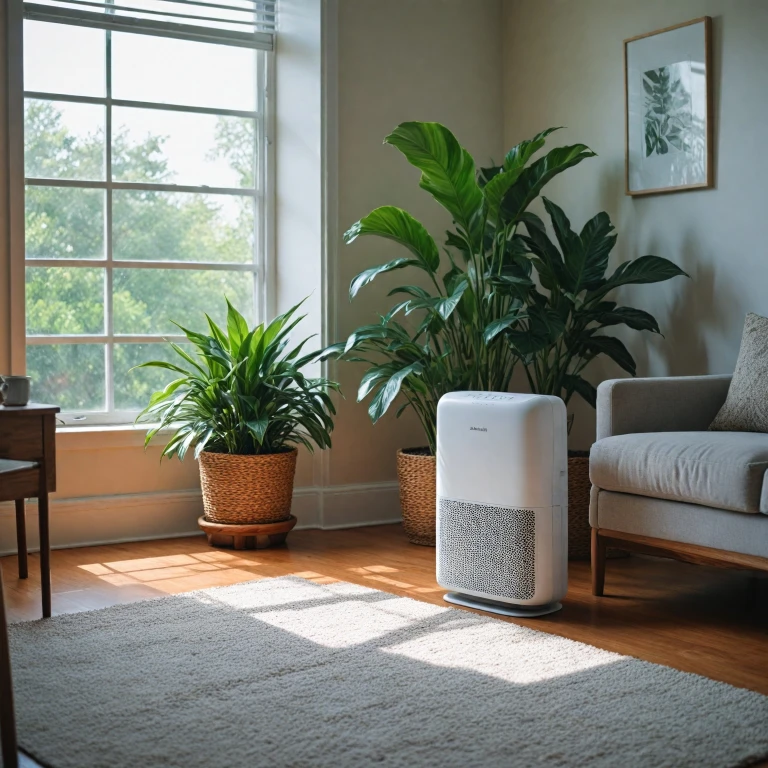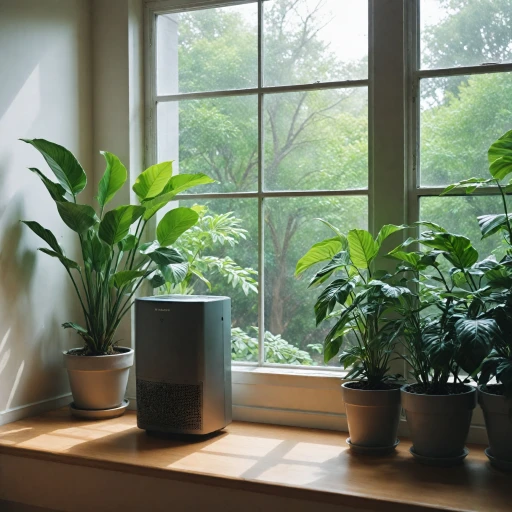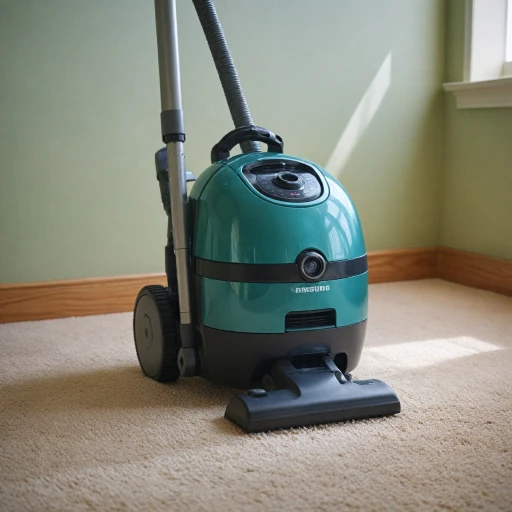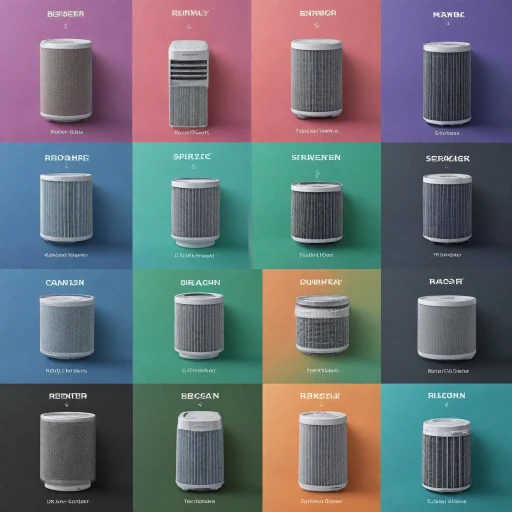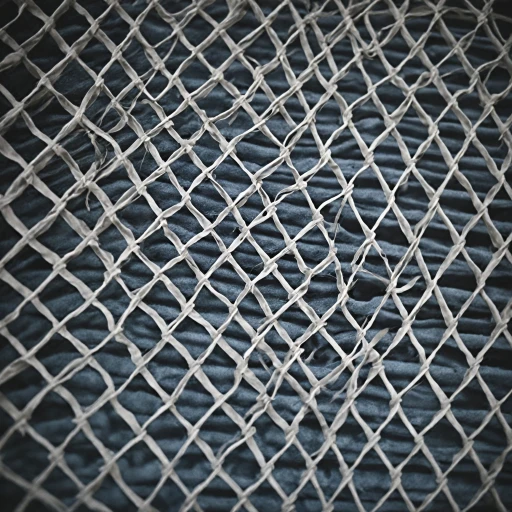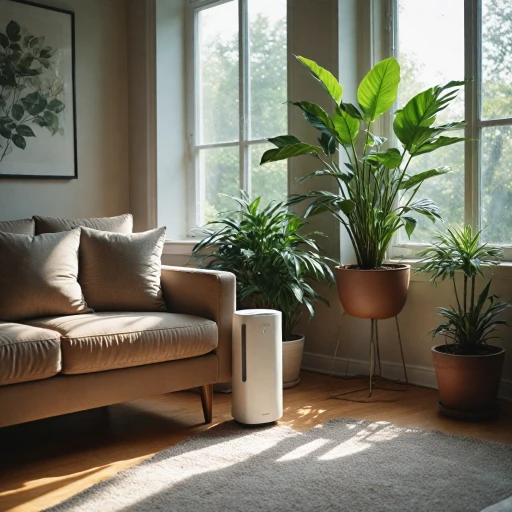What are VOCs and Why are They Harmful?
Understanding Volatile Organic Compounds (VOCs)
Volatile Organic Compounds, commonly known as VOCs, are a group of carbon-based chemicals that easily evaporate at room temperature. They are prevalent in indoor environments, sourced from products like paints, cleaning agents, adhesives, and even some personal care items. VOCs are notorious for their role in degrading indoor air quality and can pose significant health risks.The Risks of VOC Exposure
Exposure to VOCs has been linked to a range of health concerns, ranging from minor irritations to more serious chronic issues. Short-term exposure can lead to symptoms such as headaches, dizziness, and throat irritation. Long-term exposure, however, can aggravate respiratory diseases and has been associated with liver, kidney, and central nervous system damage. Moreover, certain VOCs may even be carcinogenic.Why Indoor Air Quality Matters
Given that people spend a significant amount of their time indoors, maintaining high air quality is crucial in minimizing VOC exposure. This is where air purifiers come into play, offering a proactive approach to removing these harmful compounds from your living spaces. By leveraging current filtration technology, air purifiers can efficiently address the issue of VOCs, as you will see in the following sections on filter types and technologies.How Air Purifiers Work to Remove VOCs
Unveiling the Mechanism Behind VOC Removal in Air Quality Devices
When it comes to understanding how air purifiers remove volatile organic compounds (VOCs) from the indoor air, it’s essential to dive into the filtration process. VOCs are tiny particles that often slip past basic air filters, so selecting devices equipped to handle them is crucial. The majority of VOC-removing purifiers rely on advanced filtration technology:- Activated Carbon Filters: Essential for removing VOCs, activated carbon filters work by adsorbing these compounds from the air. This is accomplished through a vast network of pores within the carbon that trap and hold VOC molecules. Many high-quality air purifiers, such as those from brands like Austin Air and Alen Air, use these filters for efficient VOC removal.
- HEPA Filters and True HEPA Filters: While HEPA filters are excellent at trapping larger particles, they aren't specifically designed to remove VOCs. However, when used in conjunction with carbon filters, they enhance overall air quality by trapping particulate matter.
- Filtration Systems with Multiple Stages: Some purifiers incorporate an array of filters working together, offering layers that capture particles, gases, and compounds across different sizes and types. The IQAir MultiGas, for instance, combines such technology to offer comprehensive coverage.
Key Features to Look for in a VOC-Removing Air Purifier
Features Essential for Effective VOC Removal
Finding the best air purifier for removing volatile organic compounds (VOCs) requires knowing what features to prioritize. VOCs can be particularly tricky to eliminate, thus relying on effective filtration technology is crucial. Below are key attributes to consider when selecting an air purifier aimed at removing VOCs from your indoor environment. Advanced Filtration Technology A high-quality air purifier targeting VOCs should include an activated carbon filter. This type of filter consists of carbon in an activated form, specifically designed to adsorb VOCs effectively.- Carbon Filter Size: Larger activated carbon filters improve the purifier's ability to adsorb VOCs, enhancing air quality.
- Combination with HEPA Filters: While HEPA filters alone don't remove VOCs, combining them with activated carbon filters can improve overall filtration by capturing larger particles, allowing the carbon filter to focus on smaller organic compounds.
Comparing Different Types of Air Purifiers
Exploring Various Air Purification Systems
When it comes to selecting an air purifier for volatile organic compounds (VOC) removal, understanding the different types and how they operate can significantly influence your choice. Several air purification systems are designed to effectively target and remove VOCs and other airborne particles, each with unique features and technologies.
Here are some key types of air purifiers to consider:
- HEPA Filters: High-Efficiency Particulate Air (HEPA) filters are renowned for capturing large particles like dust and pollen. While they excel in particulate filtration, their ability to remove VOCs is limited unless combined with other technologies like activated carbon. Look for models labeled as "true HEPA" to ensure optimal air filtration.
- Activated Carbon Filters: Known for their porous material, these filters are specifically designed to absorb VOCs and other gaseous compounds from the air. An activated carbon filter can efficiently target organic compounds, making it an essential component in VOC-removing air purifiers.
- Alen BreatheSmart Purifiers: These air purifiers often combine HEPA and carbon filters, offering comprehensive air purification. Their adjustable fan speed and customizable filters make them a versatile option for indoor air quality.
- Austin Air Purifiers: Known for their robust build and quality, these purifiers integrate both HEPA and activated carbon technologies. They are particularly effective at addressing indoor air concerns and reducing exposure to harmful VOCs.
- IQAir MultiGas Systems: These purifiers use a combination of advanced filtration technology, including multi-layered gas phase filters that excel in VOC removal. Designed for those serious about maintaining clean air, they also tackle pollutants contributing to poor air quality.
While selecting an air purifier, consider the noise level and efficiency at various speed settings. Low noise levels are essential for maintaining comfort in your living space. With a better understanding of how these systems operate (as discussed in previous sections), you can make an informed decision on the best product that matches your air quality requirements and environment.
Maintenance Tips for Optimal Air Purifier Performance
Maintaining Your Air Purifier for Continuous VOC Removal
To ensure your air purifier performs optimally in removing volatile organic compounds from your indoor air, regular maintenance is essential. Here are some tips to keep your device in top condition:- Regular Filter Replacement: Most air purifiers, like those featuring HEPA and activated carbon filters, require frequent filter changes. Check the manufacturer's recommendations for the specific type and schedule of filter changes. Clean air relies heavily on a well-maintained filter system.
- Inspect and Clean Air Grilles: Dust and particles can accumulate in the grilles over time. Regular cleaning prevents clogging and maintains efficient airflow.
- Monitor Air Quality: If your device has an air quality indicator, keep an eye on it. This can help you understand the current air quality and the effectiveness of your purifier.
- Avoid Blocking the Air Intake: Ensure that the air intake of your air purifier is not obstructed by furniture or other items, as this can reduce its efficacy in filtering VOCs and other particles.
- Adjust Fan Speed Appropriately: Depending on the level of pollutants, you may need to adjust the fan speed. Higher speeds can help to remove more air particles, but be mindful of the noise level in your environment.
Real-Life Benefits of Using VOC-Removing Air Purifiers
Real-Life Benefits of Enhanced Air Quality
Understanding the health implications of volatile organic compounds (VOCs) in indoor air is crucial for creating a safe living environment. The systematic removal of these compounds by air purifiers translates into tangible health benefits for individuals.- Improved Respiratory Health: Utilizing products like an activated carbon filter or a true HEPA filter in an Austin air purifier can significantly alleviate respiratory problems. These purifiers excel at capturing fine particles and organic compounds that aggravate asthma and allergies.
- Enhanced Comfort and Well-being: An Alen Breathesmart purifier, known for its quiet operation and adjustable fan speed, also helps to maintain a pleasant noise level, creating a tranquil environment conducive to rest and relaxation.
- Increased Focus and Productivity: A quality purifier reduces VOCs air concentration, creating a cleaner air atmosphere that enhances cognitive function and productivity. The decrease in air pollution levels leads to fewer headaches and fatigue, promoting a more focused work or study environment.
- Preservation of Home Environment: By continuously removing VOCs, air purifiers help in maintaining the quality of indoor materials and furnishings, preventing the degradation that can occur from prolonged exposure to harmful pollutants.
